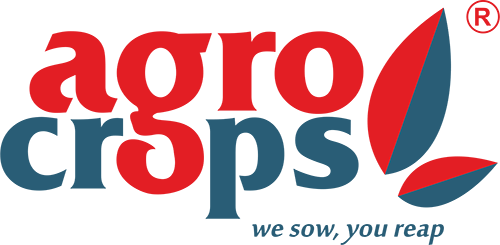India has long held the title of the “Spice Bowl of the World.” With over 75 varieties grown across the country, from red chillies and turmeric to cumin and cardamom, Indian spices are exported to more than 180 countries. In FY 2023–24, Indian spice exports were valued at over USD 4.3 billion. As we look ahead to 2025, a new layer of complexity is emerging—driven by shifting consumption habits, sustainability concerns, and food safety regulations.
In this blog, we explore the top countries importing Indian spices, highlight the key trends shaping global demand, and share market insights for exporters preparing for 2025 and beyond.
1. United States: Leading with Value and Volume
The USA has consistently been the largest importer of Indian spices by value. American consumers’ growing preference for ethnic cuisines, health-conscious diets, and home cooking has significantly increased the demand for whole and ground spices.
What’s Driving Demand:
- Rising use of turmeric, ginger, and cinnamon in wellness and supplements
- Popularity of Indian, Middle Eastern, and African cuisines
- Demand for organic and clean-label spices in both retail and foodservice channels
Indian Spices in Demand:
- Turmeric (whole & powder)
- Cumin
- Chilli powder
- Organic spice blends
Exporter Tip: Focus on residue-free, steam-sterilised, and USDA Organic certified supplies to access premium markets in the US.
2. China: Dominated by Red Chilli Trade
China, although a spice producer itself, has emerged as a major importer of Indian dry red chillies—especially varieties like Teja and 334 Sannam. These chillies are used in China’s massive food processing sector, including instant noodles, sauces, and spice oils.
Market Trends:
- Shift towards bulk chilli imports for oleoresin extraction
- Emphasis on uniform pungency and colour
- Competitive pricing and fast port access from India
Exporter Tip: Emphasise chilli heat level (SHU) and ASTA colour value; build direct relationships with industrial buyers and oleoresin processors.
3. Vietnam: India’s Strategic Re-export Partner
Vietnam imports a significant volume of Indian spices—particularly chillies and turmeric—but often re-processes and re-exports them to other Southeast Asian and European markets. Vietnam’s processing sector is highly efficient, and Indian-origin chillies are blended, powdered, and shipped under Vietnamese labels.
Key Insights:
- Vietnam serves as a strategic transit hub for Indian spices
- Importers look for clean, stemless chillies for further processing
- Indian cumin and turmeric are gaining traction
Exporter Tip: Collaborate with Vietnamese processors as raw material suppliers; ensure consistent grading and moisture control.
4. Bangladesh & Sri Lanka: Neighbourhood Demand with High Frequency
Proximity makes Bangladesh and Sri Lanka reliable and high-frequency buyers of Indian spices. The bulk of trade includes whole spices like coriander, cumin, fennel, and chillies. These are used in traditional cuisine and are also repackaged for retail sales.
Market Factors:
- Land border trade agreements and short sea routes
- Seasonal dependency for certain spices
- High demand for low-to-medium pungency chillies
Exporter Tip: Offer flexible packaging formats and quick turnaround logistics; ensure FSSAI and regional quality certifications.
5. UAE & Gulf Region: A Spice Hub with Strong Indian Diaspora Influence
The UAE acts as both a consumption and re-export hub for Indian spices. A large Indian and South Asian population, along with thriving foodservice and spice trading industries, drives sustained demand.
In-demand Spices:
- Red chilli (whole & powder)
- Cumin and coriander
- Spice blends (garam masala, biryani masala)
- Turmeric
Trends for 2025:
- Increasing demand for halal-certified, hygienically processed spices
- Shift to retail-ready packs for supermarkets and ethnic stores
Exporter Tip: Build brand presence through private label partnerships and bulk pack options for ethnic supermarkets.
6. United Kingdom: A Taste for Quality and Regulation
The UK remains a major destination for Indian spices, especially with its strong South Asian diaspora. However, post-Brexit import norms are stricter, particularly around residue limits, labelling, and traceability.
Spices in Focus:
- Curry powders
- Cumin, fennel, coriander
- Organic turmeric
- Value-added spice kits
Market Direction:
- Growth in organic and vegan spice blends
- High demand for ready-to-cook spice kits
Exporter Tip: Focus on UK import standards and traceability; offer lab reports and sustainable packaging solutions.
7. Malaysia, Indonesia & Thailand: Southeast Asia’s Growing Appetite
Countries in Southeast Asia are gradually increasing their spice imports for both culinary use and food processing. India supplies a wide range of chillies, turmeric, and whole spices to this region.
Highlights:
- Local food processing and noodle industries need bulk chilli
- Religious festivals and cultural practices drive seasonal demand
- Health-conscious younger populations are seeking natural ingredients
Exporter Tip: Build seasonal calendars and plan ahead for festival-driven bulk orders.
Emerging Markets to Watch in 2025
Africa (Nigeria, Ghana, Kenya):
- Growing taste for Indian spices in urban markets
- High demand for affordable chilli powder and spice blends
- Food processors and traders looking for reliable import sources
Russia & Eastern Europe:
- Imports of Indian spices like cumin, mustard seeds, and turmeric are growing
- Preference for whole spices for local milling and packaging
Latin America (Mexico, Brazil, Colombia):
- Indian red chilli exports on the rise due to lower cost compared to local varieties
- Opportunities for turmeric, cardamom, and masala blends in ethnic foodservice
Trends Driving Global Spice Imports from India
1. Clean Label and Organic Spices
Consumers across major importing nations are demanding pesticide-free, natural, and organic spices. Exporters must adapt by providing certified products and residue reports.
2. Health & Wellness
Turmeric, ginger, and cinnamon are booming in health food segments. Spices with anti-inflammatory and immunity-boosting properties are in high demand.
3. Convenience Formats
Pre-mixed masalas, ready-to-cook spice kits, and retail spice sachets are becoming popular in e-commerce and modern retail formats.
4. Digital Trade & E-commerce Integration
Importers and wholesalers are now sourcing through digital platforms, making packaging design, digital catalogues, and sample shipments vital.
What Exporters Must Focus on for 2025
To stay competitive and meet demand in top importing countries, Indian spice exporters should prioritise:
- Batch testing & traceability documentation
- Value addition through grinding, blending, packaging
- Certifications (ISO, HACCP, Organic, Halal)
- Consistent supply chain & farm linkages
- Customisation for retail, bulk, or private label clients



